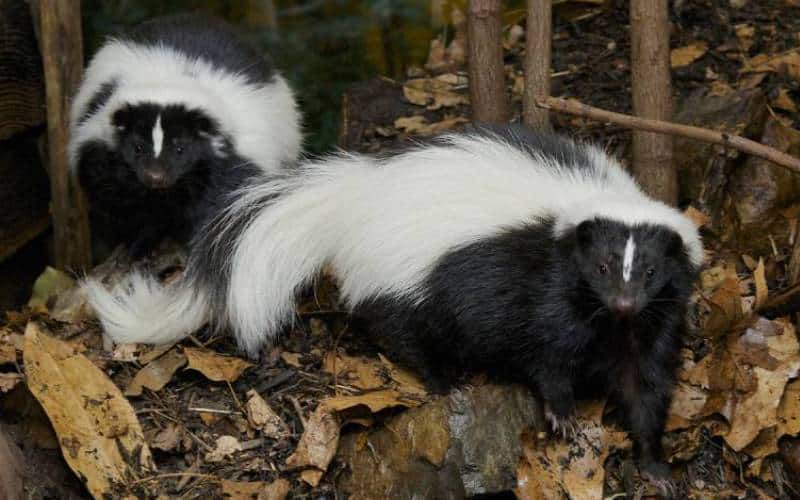Skunks may appear harmless at a glance, but their presence near homes and businesses often brings more than just a foul odor. From disease transmission to property damage, these nocturnal mammals can become a serious nuisance if not handled appropriately. Knowing when a skunk has made its way too close and understanding how skunk removal works can help you avoid costly and dangerous outcomes. Here’s what you need to know about these animals and the safest way to keep them away
Why Skunks Are Attracted to Your Property
Skunks are highly adaptable animals that settle wherever they find easy access to food, water, and shelter. Colorado’s residential areas and semi-rural communities often provide the perfect mix of conditions for skunks to thrive.
Unsecured garbage cans, pet food bowls left outdoors, compost piles, and open crawl spaces offer both resources and protection. Even well-maintained properties can unknowingly invite these animals if there are small structural openings or landscape features that provide cover.
Once a skunk identifies a yard or structure as a reliable source of nourishment and safety, it’s likely to return repeatedly or even establish a den nearby. These dens are often located under decks, porches, or sheds and can be difficult to detect until odors or physical damage become apparent.
Health and Safety Risks of Skunk Encounters
The primary concern with skunks is not just the smell but the risks they pose to people, pets, and structures. Despite their reclusive nature, skunks can trigger serious issues if left unmanaged.
Here are several health and safety concerns to consider:
- Rabies transmission: Skunks are one of the top rabies carriers among wild animals in North America. A bite or scratch, especially to a curious pet, may require urgent medical attention.
- Spray exposure: Skunk spray causes temporary blindness, skin irritation, and lingering odor that can contaminate clothing, furniture, and HVAC systems.
- Aggressive behavior when cornered: Though generally passive, skunks will spray or scratch when threatened, especially if trapped in tight spaces.
- Flea and tick carriers: Skunks often bring external parasites into yards, increasing the risk of infestations and associated illnesses.
Given these hazards, it is never advisable to approach or trap a skunk on your own. Professional assistance helps reduce personal exposure and ensures humane treatment of the animal.
Signs You May Have a Skunk Problem
Skunks are nocturnal and often go unnoticed during the early stages of their presence. However, certain indicators suggest they are nearby and possibly living under or around your home.
Watch for these common signs:
- Persistent, foul odor around decks, porches, or sheds
- Disturbed lawns or flower beds, particularly small cone-shaped holes made during foraging
- Noises at night, such as shuffling or digging near the foundation
- Pet reactions, like barking or scratching at specific exterior areas
If you’re noticing multiple signs, it may be time to explore local skunk removal options that are both humane and effective.
Safe and Humane Skunk Removal Methods
Effective skunk removal focuses on eliminating attractants, sealing potential dens, and professionally relocating the animal. The process is best left to trained technicians due to the unpredictable nature of skunks and the potential for injury or spray exposure.
Safe removal strategies typically include:
- Exclusion techniques: Installing barriers or mesh to block access under decks, crawl spaces, or sheds
- One-way doors: Used to allow skunks to exit their den without re-entry
- Live trapping: Only performed under legal and ethical guidelines, this method ensures the animal is relocated safely
- Sanitation and deodorization: Necessary after removal to eliminate scent trails that could attract other skunks
It’s important to remember that state laws may prohibit certain removal methods. Professionals understand the regulations and apply methods that are both effective and compliant.
Long-Term Prevention Through Proactive Solutions
After removal, keeping skunks away requires more than quick fixes. A long-term solution should address why the skunk appeared in the first place and eliminate those conditions. Property owners should secure food waste, block common shelter areas, and repair vulnerabilities like gaps in the foundation or crawlspace vents.
Preventive work also includes routine property checks, especially during seasonal transitions when animals seek new shelter. This is particularly vital for businesses, multi-unit residences, or rural properties where consistent activity and varied access points create ongoing risks.
For larger areas, implementing an integrated pest management approach is often the most efficient way to handle wildlife and other pest threats together. It’s a strategic framework that offers better long-term protection with fewer reactive emergencies.
A Smarter Way to Keep Skunks Away
Noticing signs of a skunk nearby? Don’t let the problem grow or put yourself at risk. Reach out to Clearview Pest Control for expert help with humane and reliable skunk removal.



